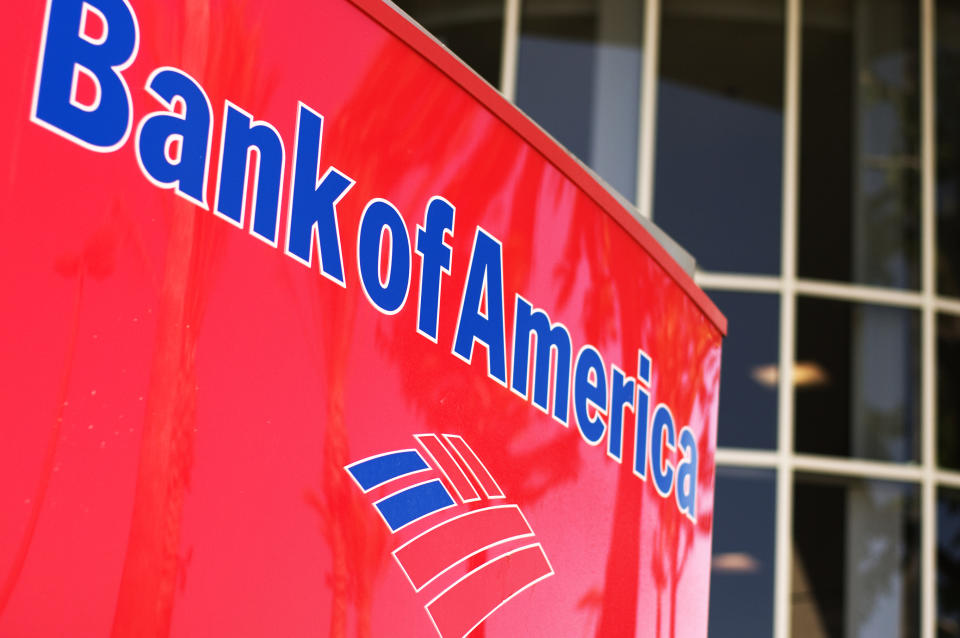Bank of America is becoming the Amazon of retail banking

Erica, Bank of America’s AI assistant, may not be a household name like Alexa or Siri. But in just 18 months, the text and voice-based virtual assistant has amassed more than 10 million users and completed 100 million client requests, cementing itself as the core of the bank’s digital strategy for 2020 and beyond.
Bank of America (BAC) has been at the forefront in digital banking innovation for a number of years now, having invested early and heavily in digital and mobile products. Perhaps the biggest innovation thus far: pioneering mobile checking deposit in 2012, enabling millions of customers to never have to wait in line for a teller on their lunch break.
Bank of America is now putting its virtual assistant at the center of its services strategy — and it’s catching on fast.
“Everything in banking is moving at a faster pace than it has in the past,” said David Tyrie, head of Advanced Solutions and Digital Banking. “When the very first ATM came out, it took years for people to really start using them at a massive scale. And the reason is because it takes time to trust new technology.”
But with the groundwork laid by Siri, Alexa, Cortana, and Google, people have embraced talking to and texting with their phone about money — and being texted as well about insights. For example, if there’s a recurring charge that is higher than usual, “Erica” will say something. Other banks have gone down this path as well — including Capital One and some other banks that have added “skills” to Amazon’s Alexa platform.
Bank of America’s idea for the future is marrying its advanced digital offering with 4,300 branches, offering what Tyrie calls a “high tech, high touch” approach.
The “high tech” part is a culmination of a long process of getting the bank digitized. Today, the app can essentially do all the transactions a person can do in a physical branch, providing convenience and also freeing up branches for those who really need a human touch.
“It took us years to build the mobile app,” said Tyrie. “But it took us a year to get Erica to do everything the mobile app can do.”

At its launch in June 2018, Erica only had the ability to perform very simple interactions, mostly providing answers to questions like balance inquiries. But when the bank added transactions to the capability, the growth spiked and then hockey-sticked when the assistant began giving customers insights about their finances and helping them budget.
Selling the value of an AI assistant
As people have become more familiar with Erica, opportunities emerged. With a dialogue established between customers, the bank could now suggest things and give insights to customers.
“Thinking about that path, all of a sudden we started looking at Erica very differently,” said Tyrie. “We look at the ability to scale the digital experience and personalize well beyond having a mobile app or website.”
Having a chatbot/voice assistant with a name that ends with an A isn’t the only similarity this approach has with Amazon. One of the key ideas driving the bank’s app is instead of having one app, there are 40 million different apps — customized and personalized for each user.
“Erica is the engine that helps us with personalization and scale,” said Tyrie. The app can be configured to a person’s preferences and usage, giving everyone a different home page — similar to the way Amazon and Netflix give every user a different home screen. But requests are also a direct feed of what customers want. When the app can execute the command, it does it. But when it doesn’t, it provides the bank with a wishlist, which has already resulted in new features.
Tyrie said customers asked whether Erica could show duplicate credit card charges from merchants if someone suspected they were charged twice. Soon after, the bank added this to Erica’s portfolio of tasks — and on top of that added a feature that would allow the user to click on the transaction and message the merchant that an error may have been made.
Similarly, a feature that recognizes recurring charges — rolling out early next year — came into existence at the behest of consumers who lost their debit or credit cards. If someone loses a card, they can ask Erica to give a list of recurring charges to update the card numbers on file. And when someone gets a new card, Erica will proactively provide a list of places where the card needs to be updated.
Erica’s capabilities are constantly evolving as the chatbot “learns” new things. Refund confirmation insights are coming, letting people know when a refund is posted to their account after a customer returns an item. The assistant is now integrated with Bank of America’s Preferred Rewards program that incentivizes account holders to have a wider relationship with the bank.
None of these services seem particularly earth-shattering on their own, Tyrie noted, but the bank is betting that the full suite will make for more efficient operations and happier customers.
Mobile check deposit has become de rigueur, largely based on Bank of America raising the table stakes for the industry. A chatbot could be next, but if the amount of work Tyrie’s team has put into the task and the scale of Bank of America is anything to go by, it won’t be easy.
-
Ethan Wolff-Mann is a writer at Yahoo Finance focusing on consumer issues, personal finance, retail, airlines, and more. Follow him on Twitter @ewolffmann.
More End-of-the-Decade stories:
Why the 2010s were a decade divided
The stock market's biggest winners and losers of the past decade
20 businesses that died in the 2010s
Read the latest financial and business news from Yahoo Finance
Follow Yahoo Finance on Twitter, Facebook, Instagram, Flipboard, LinkedIn, YouTube, and reddit.